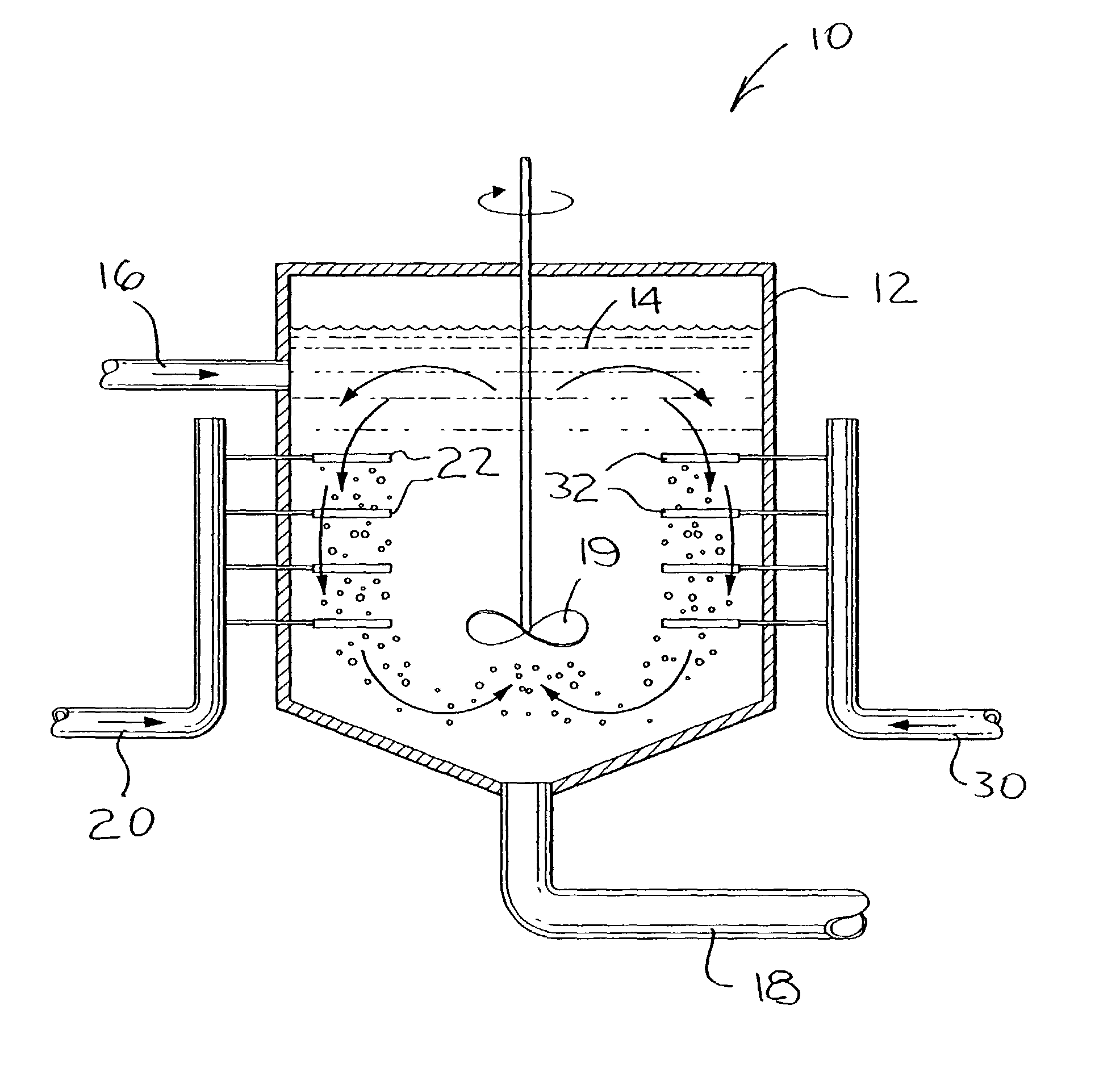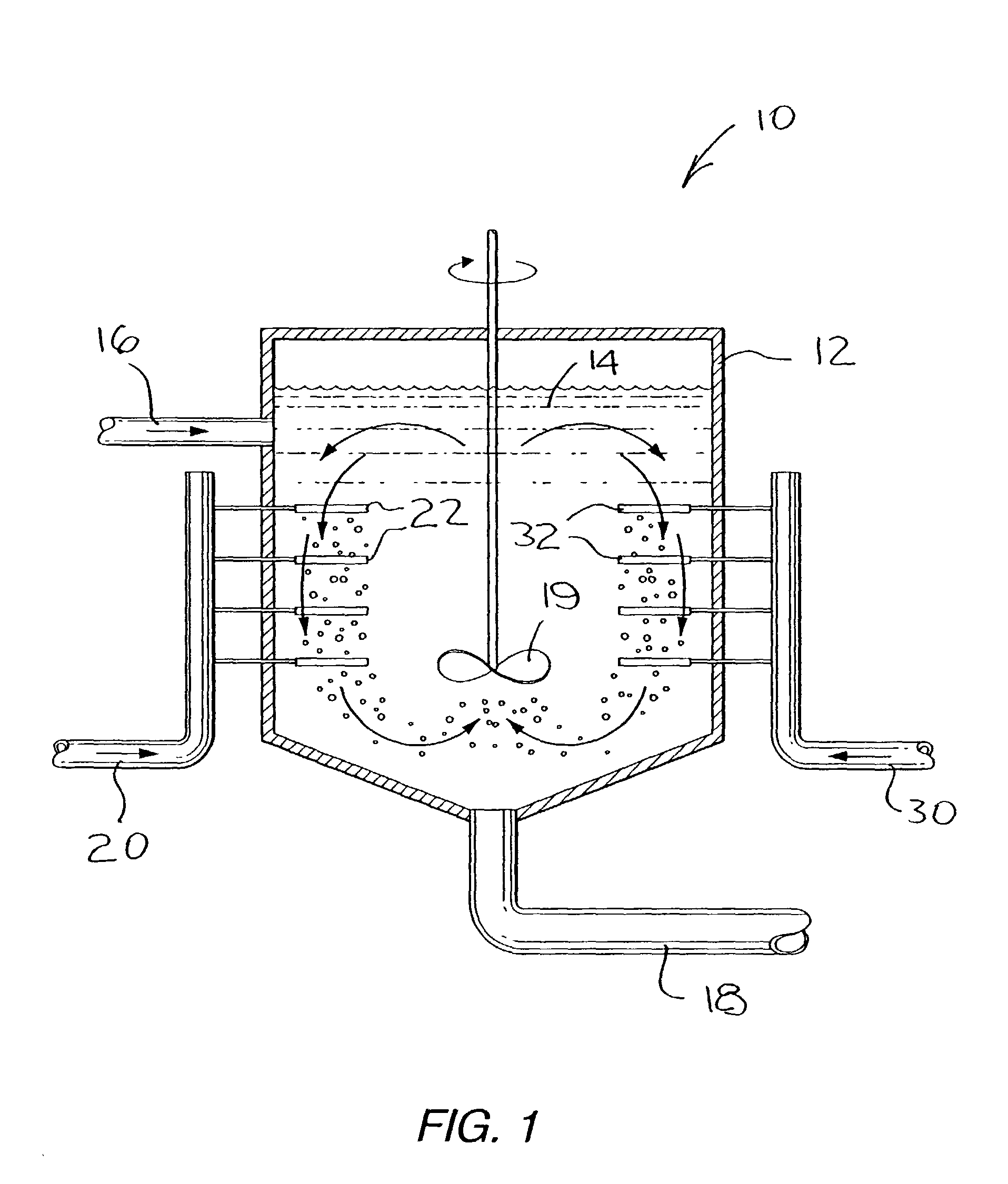Wastewater treatment with alkanes
a technology of wastewater and alkanes, applied in biological water/sewage treatment, filtration separation, separation processes, etc., can solve the problems of reducing the rate of increase of bacterial mass, and the most readily available carbon source for established microbial populations
- Summary
- Abstract
- Description
- Claims
- Application Information
AI Technical Summary
Benefits of technology
Problems solved by technology
Method used
Image
Examples
example 2
[0100] A butane-injection system was installed in a municipal wastewater treatment plant comprising an extended aeration activated sludge system. The plant included an aerated 12,000 gallon sludge thickening and holding tank. The sludge tank was equipped with an air / butane injector and diffuser. The injector constantly fed air to the tank at a rate of about 5 cubic feet per minute. Twice per day butane was added to the injected air stream for 6 minutes. During an initial 8-day period, a total amount of approximately 120 pounds of butane was pulsed to the tank. After the initial 8-day period, settleable solids of the sludge were measured by placing a sample of the treated sludge in a one liter container and observing the upper level of the settleable solids versus the upper level of the liquid after 120 minutes. The initial 8-day sample had a 50 ml / l drop after 120 minutes. A subsequent 8-day test was then conducted. All but 2,000 gallons of the initial butane treated sludge was remo...
PUM
| Property | Measurement | Unit |
|---|---|---|
| weight percent | aaaaa | aaaaa |
| weight percent | aaaaa | aaaaa |
| weight percent | aaaaa | aaaaa |
Abstract
Description
Claims
Application Information
 Login to View More
Login to View More - R&D
- Intellectual Property
- Life Sciences
- Materials
- Tech Scout
- Unparalleled Data Quality
- Higher Quality Content
- 60% Fewer Hallucinations
Browse by: Latest US Patents, China's latest patents, Technical Efficacy Thesaurus, Application Domain, Technology Topic, Popular Technical Reports.
© 2025 PatSnap. All rights reserved.Legal|Privacy policy|Modern Slavery Act Transparency Statement|Sitemap|About US| Contact US: help@patsnap.com



